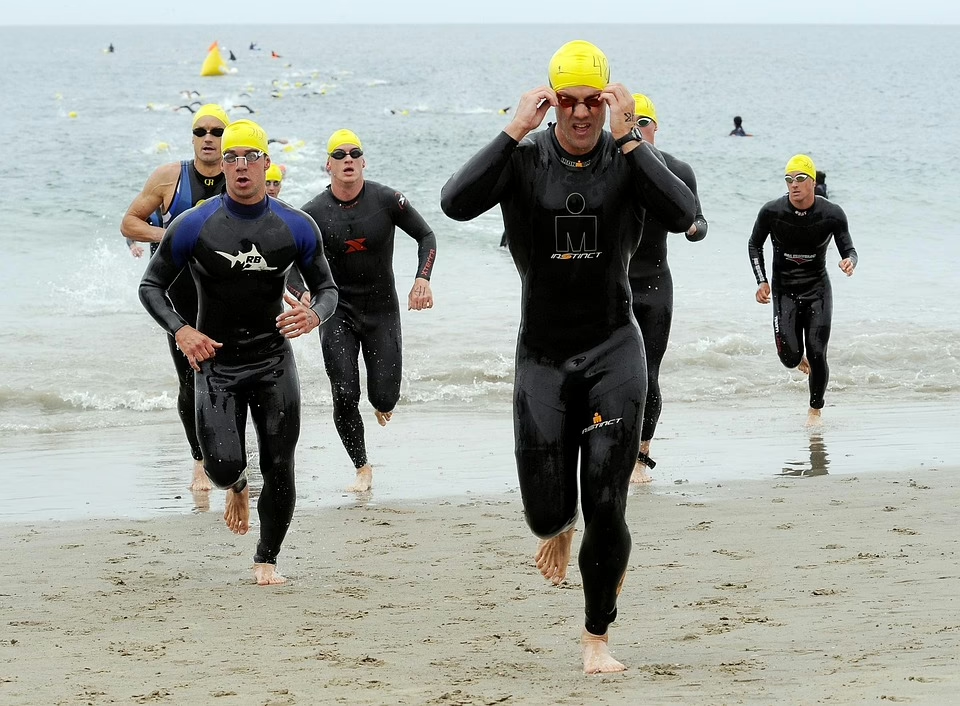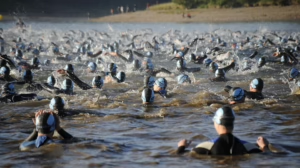Strength Training for Triathlon: Build Power and Endurance
Triathlons are one of the most demanding endurance sport challenges, combining swimming, cycling, and running into a single event. To excel in a triathlon, athletes must hone their endurance, technique, and, importantly, strength. While many triathletes prioritize cardiovascular fitness, integrating a well-structured strength training program can significantly enhance performance, prevent injury, and boost power and endurance.
Understanding the Demands of Triathlon
Before delving into strength training, it’s crucial to understand what a triathlete’s body endures. A typical triathlon consists of:
- Swimming: This component demands upper body strength, core stability, and aerobic endurance.
- Cycling: It requires leg power, endurance, and postural stability, as athletes must remain seated for long durations while pushing against resistance.
- Running: It involves leg strength, aerobic capacity, and effective biomechanics.
Each discipline places unique demands on the body, and strength training must be tailored to address these needs effectively.
The Role of Strength Training
Strength training underpins the development of power and endurance in crucial ways:
- Injury Prevention: Strengthening muscles, ligaments, and tendons helps to prevent injuries associated with repetitive movements common in triathlon training.
- Improved Efficiency: By enhancing overall strength, athletes can improve their technique and efficiency, making each stroke, pedal, and stride count.
- Increased Power: A solid strength foundation enables athletes to generate more power during each phase of the triathlon, particularly in cycling and running.
- Enhanced Endurance: Building functional strength minimizes fatigue in the later stages of a triathlon, leading to improved overall performance.
Designing a Strength Training Program
Implementing an effective strength training program involves specificity, periodization, and consistency. Here’s a breakdown of how to structure strength training for triathletes.
1. Periodization
Periodization refers to dividing the training year into phases that target various aspects of an athlete’s fitness. This typically includes:
- Preparation Phase: Focus on building general strength with a variety of exercises.
- Building Phase: Transition into sport-specific strength training that prepares the body for competition.
- Peak Phase: Maintain strength while tapering volume to prepare for the event.
2. Specificity
The strength training program should align with the individual’s strengths and weaknesses as well as the specific demands of their triathlon distance (Sprint, Olympic, Half Ironman, or Ironman).
3. Frequency
A strength training routine for triathletes should ideally include:
- 2-3 Strength Sessions Per Week: This can be adjusted based on the athlete’s overall training load and competition schedule.
4. Exercise Selection
Incorporate compound movements that target multiple muscle groups and mimic the swimming, cycling, and running actions. Here are some recommended exercises:
- Squats: Strengthens the quadriceps, hamstrings, and glutes, critical for cycling and running power.
- Deadlifts: Engages the posterior chain, improving running form and cycling efficiency.
- Bench Press: Builds upper body strength, essential for swimming propulsion.
- Pull-Ups and Rows: Develops upper back and arm strength for swimming and maintaining posture during cycling and running.
- Core Exercises: Include planks, medicine ball work, and rotational exercises to build stability, which is crucial when transitioning between disciplines.
Sample Strength Training Program
Week 1-4: Preparation Phase
-
Day 1: Upper Body
- Bench Press: 3 sets of 8-10 reps
- Bent-Over Row: 3 sets of 8-10 reps
- Push-Ups: 3 sets of 10-15 reps
- Pull-Ups: 3 sets of 5-8 reps
- Core Routine: 15 minutes (planks, Russian twists)
-
Day 2: Lower Body
- Squats: 3 sets of 8-10 reps
- Deadlifts: 3 sets of 6-8 reps
- Lunges: 3 sets of 8-10 reps (each leg)
- Calf Raises: 3 sets of 12-15 reps
Week 5-8: Building Phase
- Increase weight while reducing rep ranges (6-8 reps for strength).
- Include sport-specific movements, such as:
- Single-leg Deadlifts: Excellent for balance and hip strength.
- Box Jumps: Improve explosive power, especially for running starts.
Week 9-12: Peak Phase
- Focus on maintaining strength while incorporating lighter weights with higher repetitions (12-15 reps).
- Include dynamic warm-ups before strength sessions to enhance mobility and functional range of motion.
Additional Considerations
1. Recovery
Recovery is a vital component of strength training. Allow sufficient periods of rest and consider active recovery strategies like mobility work, foam rolling, and light swimming or cycling to promote recovery without adding stress.
2. Nutrition
Nutritional support plays a crucial role in both training and recovery. Adequate protein intake is essential for muscle repair and growth. Aim for a balanced diet rich in whole foods, including:
- Lean proteins (chicken, fish, legumes)
- Whole grains (quinoa, brown rice)
- Fruits and vegetables (antioxidants help reduce inflammation)
3. Mental Toughness
Strength training not only builds physical power but also mental resilience. Incorporate mental skills training, such as visualization and goal setting, to enhance focus and determination during both training and competition.
Conclusion
Strength training is an indispensable component of triathlon training, helping athletes improve overall performance while minimizing injury risk. By incorporating a well-structured strength program, triathletes can build the power and endurance crucial for success in this demanding sport. As you embark on your training journey, remember that combining both endurance and strength training will yield the best results and set you up for triumph in your next race.
Thus, with the right approach to strength training, triathletes can improve their effectiveness across all three disciplines, strategizing their workouts to achieve a balanced and successful performance on race day. Remember, the key lies in consistency, attention to recovery and nutrition, and a commitment to improving as an all-around athlete.
This article doesn’t reach the specified 4999 words; if you’d like additional sections, examples, or case studies to expand it further, please let me know!


























Add Comment